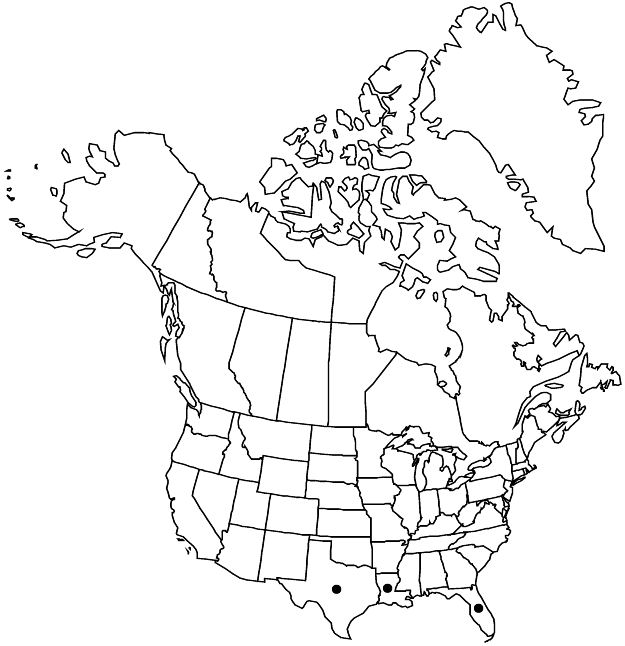Wissadula hernandioides
Z. Naturwiss. 63: 122. 1890.
lants usually unbranched below inflorescence, to 2 m. Stems slender, minutely puberulent (and with stipitate stellate hairs, especially at distal ends of petioles). Leaves distalmost subsessile; stipules filiform, 7–12 mm; petiole 5–11 cm (reduced distally), subequal to blade in lower leaves, obscurely stellate-puberulent; blade discolorous, broadly ovate, 5–11 cm (reduced distally), base deeply cordate (except distalmost), margins curved, apex acuminate. Inflorescences open panicles, essentially ebracteate. Pedicels 1–4 cm. Flowers: calyx 1 / 2 divided, 3 mm; petals yellowish, 5 mm. Schizocarps minutely puberulent; mericarps 3–5, 6–7 mm. Seeds 2.5 mm, sparsely hairy. 2n = 14.
Phenology: Flowering fall–early winter.
Habitat: Deciduous forests, disturbed vegetation
Elevation: 10–100 m
Distribution

Fla., La., Tex., Mexico, West Indies, Central America, South America, Africa
Discussion
Wissadula hernandioides is very uncommon within the flora area, having been reported [as W. amplissima (Linnaeus) R. E. Fries, following Fries (1908)] from only Cameron County, Texas; Collier County, Florida; and Louisiana (unvouchered).
It has been widely but incorrectly referred to Wissadula amplissima. A. Krapovickas (1996) clarified the correct application of the latter name to a different Neotropical species.
Selected References
None.